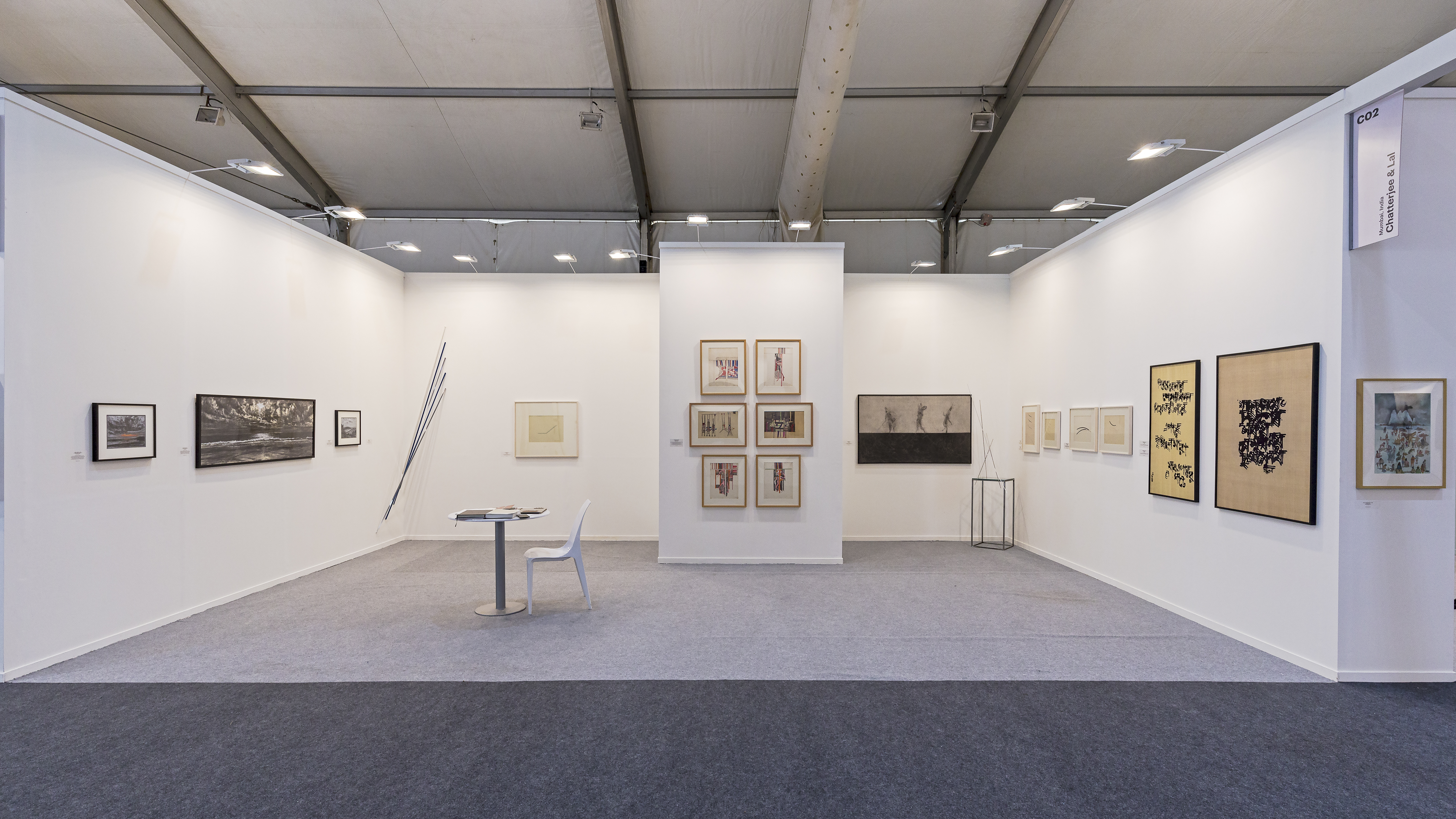Art Fairs > 2019
India Art Fair | New Delhi | 2019
Chatterjee & Lal was a part of India Art Fair 2019 which was held in New Delhi from January 31 – February 3. The booth included works of artists :
Install shot | Chatterjee & Lal
Minam Apang
Over the last fifteen years Minam Apang’s practice has primarily focussed on painting – increasingly utilising charcoals – and has often engaged with myths and stories that originate from North East India. She has had multiple solo exhibitions at Chatterjee & Lal, Mumbai. In 2012, the artist was selected for ‘The Ungovernables’, a major triennial curated by Eungie Joo, at the New Museum, New York and was a part of the 6th Asia Pacific Triennial, Gallery of Modern Art, Brisbane, 2009.
Nikhil Chopra
Drawing resides at the heart of Nikhil Chopra’s performance-based practice. Over the last decade he has used diverse unconventional surfaces to bring alive his mark making, including paper, walls, pavements, ceilings, as well as large swathes of cloth and canvas. Landscapes constitute the majority of these works. Often these landscapes are the very same ones into which the artist is about to journey. Amongst many major institutional exhibitions, Nikhil Chopra was included in Documenta 14, 2017.
Amshu Chukki
Amshu Chukki explores the themes of reality and fiction through multimedia artwork in a manner that contemplates the outlandish nature of constructed landscapes and surreal spaces. Incorporating the narrative structure of filmmaking, he delves into the dystopian world of man-made sites and artefacts, questioning the very notions of nature and reality. His debut exhibition, The Tour, was held at Chatterjee & Lal in 2017.
Riten Mozumdar
Mozumdar graduated from Santiniketan in 1950, with a diploma in art. In addition to his gallery practice, he worked as a textile designer for brands such as Printex-Marimekko and Fabindia; he was also a consultant to the famous Delhi-based furniture company, TAARU. Throughout his lifetime, his designs and artworks were exhibited widely both in India and outside the country.
Nasreen Mohamedi
Nasreen Mohamedi was an artist and educator, active from the early 1960s until her early death in 1990. Having trained in London and Paris, she pursued her career mainly in India. Recognised as a leading abstractionist of her generation, her legacy has only grown since her death. Mohamedi’s works have been exhibited at The Metropolitan Museum, New York; Tate Liverpool; and The Reina Sofia in Madrid.
Mark Prime
Mark Prime’s interest in light and its attributes have combined with an affinity for minimalism and geometric abstraction. Resulting works have been realised in a wide range of media including laser installations, sculpture, photography, and, more recently, painting. The artist is an accomplished musician: rhythm, repetition and synchronised patterns are concepts that continually inform his practice.
Sahej Rahal
Sahej Rahal’s body of work is a growing narrative that draws upon mythical beings, and brings them into a dialogue with the present. Within this narrative, these beings perform absurd acts in derelict corners of the city, transforming the spaces into liminal sites of ritual. The temporal act and its residue become primary motifs in his practice.
K.G. Subramanyan
K.G. Subramanyan was one of India’s iconic artists and educators. He belonged to the founding generation of post-independent India; a generation that was looking for a collective national identity though art and indigenous design. In his practice, Subramanyan infused local stories, folklore and art techniques. In a career spanning nearly seven decades, K.G. Subramanyan’s work has been exhibited all over the world. He was a recipient of all three Padma awards.
Nityan Unnikrishnan
Nityan Unnikrishnan grew up in Kerala along with the intellectual milieu of a world populated by left leaning filmmakers, painters and academics. He creates paintings from a myriad of sources, both real and imaginary, including elements from his childhood and his working life. He creates a dynamic relationship between the individual self and landscape. These surreal inversions of reality take the viewer to the interior world of the subject and, by default, to the world of the artist himself.

